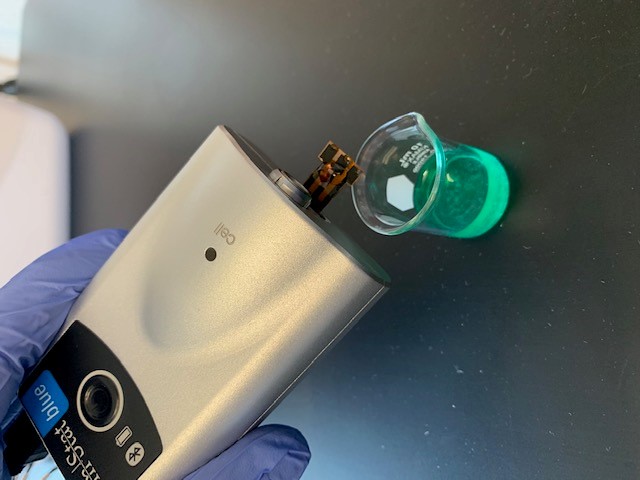
Good things come in small packages. Sadly, so do bad things. That’s where Iowa State University’s (ISU) Department of Mechanical Engineering comes in.
Led by Dr. Jonathan Claussen, ISU researchers have used nanotechnology to develop a sensor that can detect organophosphates at levels 40 times smaller than the U.S. Environmental Protection Agency (EPA) recommendations. Organophosphates are certain classes of insecticides used on crops throughout the world to kill insects.
“It is important that we quantify insecticide runoff and drift so that we can characterize its long-term effects and find ways to minimize those effects.”
USDA’s National Institute of Food and Agriculture is supporting this research through a pair of Agriculture and Food Research Initiative grants totaling $573,000.
Claussen used the grants to develop Salt Impregnated Inkjet Maskless Lithography (SIIML), which uses an inkjet printer to create inexpensive graphene circuits with high electrical conductivity. He adds salts to the ink, which is later washed away to leave microsized divots or craters in the surface. This textured printed graphene surface is able to bind with pesticide-sensing enzymes to increase sensitivity during pesticide biosensing.
These sensors can detect contaminants as small as 0.6 nanometers (nM) in length, well below the EPA standard of 24 nM and Canada’s standard of 170 nM.
Claussen compares the graphene sensors to glucose test strips that diabetics use to monitor their blood. Both the glucose test strip and the graphene pesticide test strip monitor selected compounds through electrochemical means.
This technology can be adapted for field use to detect a wide range of samples, including pathogens in food and fertilizer in soil and water. The technology is so inexpensive, Claussen said, that sensors could be used across an entire farm field to monitor pesticides and fertilizers so that farmers could limit their use and apply only what is truly needed.
In addition to improving the environmental ecosystem, Claussen said that SIIML could improve food safety, from farm to fork.
“The sensors could be designed to detect pathogens in food processing facilities to prevent food contamination,” he said. “The sensors could also be used to monitor cattle diseases, for example, before physical symptoms are present. This technique could really be a game changer for a variety of in-field sensing applications that require low-cost but highly sensitive biosensors.”
This research was published in Nanoscale Horizons.
NIFA invests in and advances agricultural research, education, and extension and seeks to make transformative discoveries that solve societal challenges.
